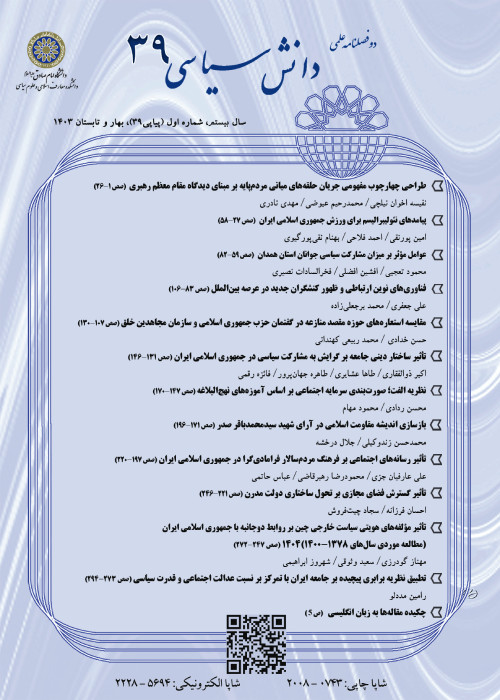A comparative study of the strategy of resistance of Imami scholars against foreigners; From the Constitutional Movement and the Islamic Revolution
. The strategy of resistance against foreigners is one of the courts of Imami political thought and arises from the intellectual principles and general rules of Shiite political jurisprudence. But it is obvious that the rationality, the requirements of the time, and the context of the Shari'a ruling have led to the understanding, definition, and consequently distinctive resistance action by Shiite scholars throughout Shiite life, from disobeying the Muslim caliph to accompanying the Shiite king and finally revolution against the Shah. The issue explored in this study is to understand and explain this different act of resistance in two historical turning points of contemporary Iran, namely the constitutional movement and the Islamic Revolution. The main question is what agreements and differences in the strategy of resistance of Shiite scholars in the two mentioned periods can be counted? To answer this question, using the method of comparative-historical analysis, which pays attention to the three aspects of causal analysis, attention to time processes and systematic comparison of the weaver, the question was answered in a qualitative research framework in the form of Stuart Mill's comparative analysis model. In the first step, drawing the image of resistance in the two mentioned developments is clear, then the examples of resistance strategy are mentioned and finally the resistance strategy is examined with emphasis on the jurisprudential method of Shiite scholars. . In the constitution, resistance has an internal development and is consistent with the resistance of companion piety against tyranny. Lines up against the alien. During this research, it was found that the resistance of constitutional scholars, both legitimate and constitutionalist, was systemic, minimalist, pious, and sought to reform power. Meanwhile, the pattern of resistance of the ulema in the Islamic Revolution has been extra-systemic, maximal and active, non-pious and seeking a change of power.
- حق عضویت دریافتی صرف حمایت از نشریات عضو و نگهداری، تکمیل و توسعه مگیران میشود.
- پرداخت حق اشتراک و دانلود مقالات اجازه بازنشر آن در سایر رسانههای چاپی و دیجیتال را به کاربر نمیدهد.



